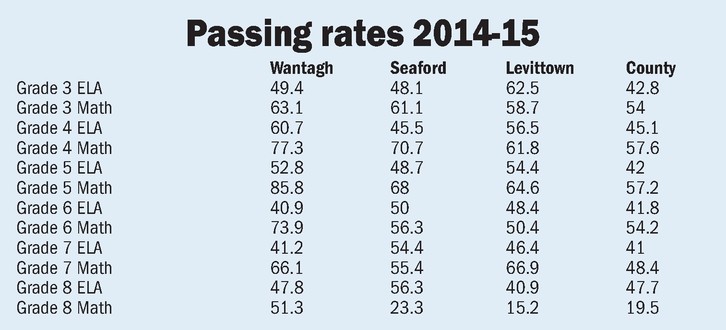Refusals skew state test scores
New York State test scores were released last week, but the rising trend of test refusals means that results are no longer indicative of a district’s performance.
Year-to-year improvements or declines are being determined by fewer and fewer students taking the tests. Seaford had 62 percent of students refuse the tests, followed by 61 percent in Levittown and 48 percent in Wantagh, an action known as “opting out.”
The assessments are given annually in English Language Arts and math to students in third through eighth grade.
Levittown Superintendent Dr. Tonie McDonald said it is difficult to make district-wide curriculum decisions based on the test results, because less than half of eligible students were assessed.
Debbie Rifkin, the assistant superintendent for instruction, said that district officials will instead review the data for the students who did take the tests, and use that to help them individually.
The best performance by students in Levittown was on the seventh-grade math exam, with 67 percent passing. In fifth-grade, 65 percent passed math, along with 62 percent of fourth-graders.
The lowest rate was 15.2 percent passing math, but that number alone does not tell the whole story. Only 66 students, out of more than 500, took that test. Accelerated math students in high-school algebra took the Regents exam and did not have to take the regular eighth-grade math assessment.
McDonald said she was particularly proud of the third-grade ELA scores. The 63 percent passing rate was 12 points better than last year’s third-grade class. According to McDonald, it was also one of the best passing rates among local districts and in the state. “It is extremely difficult to raise ELA scores,” McDonald said, noting the complexity of the subject and the changes in the tests from year to year.
The district targeted ELA for improvement. Rifkin said that meetings were held with teachers, and data was used to pinpoint the strengths and weaknesses of each student. In class, students were then grouped based upon the skills in which they needed the most improvement. She and McDonald said the teachers had extra training and worked very hard to improve student achievement.

 66.0°,
Shallow Fog
66.0°,
Shallow Fog 




